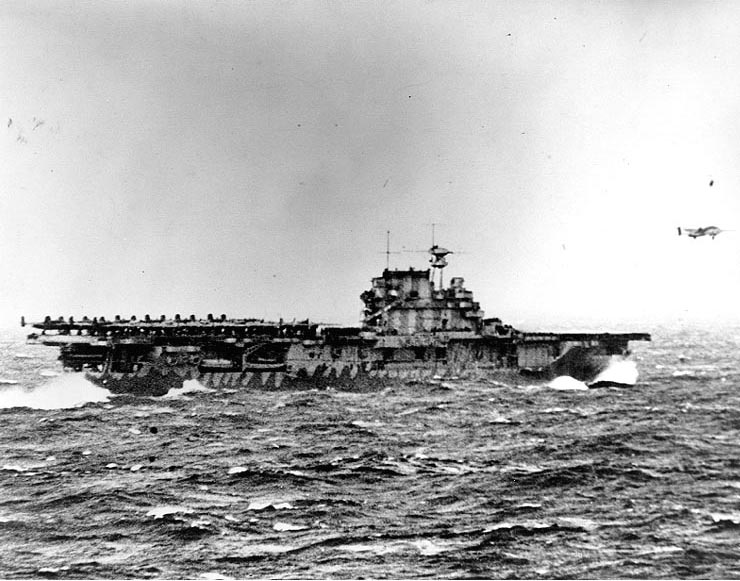Air Operations, CBI
2 AVG P-40s down a Japanese Army reconnaissance plane over Loiwing, Burma at 1300 hours.
[Air Operations, Mediterranean
There is a heavy daylight raid on Malta.
[Allied Command
The command structure in the Southwest Pacific is changed. Under MacArthur, the supreme commander, are the Commander-in-Chief of Australian forces, Gen Sir Thomas Blamey, who will be in charge of all land operations, the American Gen George H. Brett at the head of the air forces, and Adm Herbert F. Leary, up to now head of the ANZAC forces, who will command Allied naval forces.
[Battle of the Atlantic
The unarmed US tanker Axtell J. Byles, in a coastal convoy, is torpedoed by U-136 off Cape Hatteras, North Carolina, but reaches Hampton Roads the next day. There are no casualties.
[Burma
In the Yenangyaung area, the Burmese 1st Division drives to the outskirts of Twingon. The Chinese 38th Division clears a portion of Pin Chaung. On the Sittang front, the Chinese 22nd Division is relieved by the Chinese 96th and withdraws north of Pyinmana. The Chinese 200th Division is ordered to Meiktila but does not move. The Chinese T-55th Division, retreating from Mauchi, is effectively destroyed by the Japanese 56th Division south of Loikaw and communications between it and the Chinese 6th Army cease. This leaves the road to Lashio undefended for the moment. Lashio is the southern terminus of the Burma Road. Elements of the 93rd Divisioon, which were to have assisted the T-55t6h do not reach the T-55th in time to be of help.
[Eastern Front
Field-Marshal Wilhelm Ritter von Leeb is removed from command of Army Group North attacking Leningrad. Von Leeb was frustrated by Hitler's direction of the war, and Hitler was equally frustrated by the marshal's inability to occupy Leningrad.
CENTRAL SECTORBitter fighting sees the destruction of the paratroopers and partisans at Dorogobuzh, partially clearing the lines of communication to the Rzhev salient. The 33rd Army is brought under heavy attack.
[0
Mediterranean
The British submarine Thrasher sinks the German steamer Bellono (1297t) near Tobruk.
[North Sea
The German steamer Seafarer (2978t) sinks on a mine near Borkum, Germany.
[Pacific
Bombers from the USS Hornet raid targets in Japan. Under the command of Col James H. Doolittle, 16 B-25 Mitchell bombers of the XVII Bomber Group of the 8th Air Force, take off from the Hornet about 650 miles from Japan, raid Tokyo and other targets and fly on to China.
Technically the raid is extremely difficult. The bombers fly practically unarmed because of the need to lighten them to give extra range and the ability to take off from a carrier deck. The USS Enterprise accompanies the Hornet to give fighter cover. Also escorting the Hornet are the cruisers Vincennes and Nashville, with their complement of destroyers. This is not in fact needed because, although the carriers are sighted, the Japanese wait for them to come within the range of lighter bombers before launching their attack.
|
|
|
|
The first attacking aircraft is launched at 8:18a.m. about 10 hours ahead of schedule because the task force had been spotted by a Japanese vessel. This increases the distance the bombers have to fly to 800 statute miles. The B-25s arrive over their targets at 12:15p.m. and drop bombs on Tokyo, Kobe, Yokohama, Nagoya and Yokosuka. 8 of the planes bomb their primary targets. 5 others select secondary objectives. Only 1 fails to drop bombs on Japan. Favored by an uncommon tail wind, they continue flying westward most to China and safety. One plane lands near Vladivostok and its crew is interned by the Russians. 2 planes end up in Japanese-occupied territory where their crews are made prisoners. Some of these will be shot on October 15, 1942.
The carriers and the other ships involved in the raid return unharmed. Little material damage is done, but the effect on the morale of both sides is enormous. The heart of the Empire of the Rising Sun is not, as the Japanese have believed, invulnerable. The Japanese immediately begin to bring more fighter forces home to strengthen their defenses. The attack contributes most importantly of all to the Japanese decision to revise their strategy and expand their perimeter. The direct results of this decision will be the Battles of the Coral Sea and Midway.
Bombs Hitting Tokyo Targets |
 |
Vichy France
(14th?)Laval forms a new Cabinet at Vichy, with himself as 'Chief of Government', Minister of Home and Foreign Affairs. Darlan becomes Supreme Commander of the Armed Forces. Laval is eager to enhance Franco-German relations and undermines the more hesitant approach advocated by Pétain.
[


